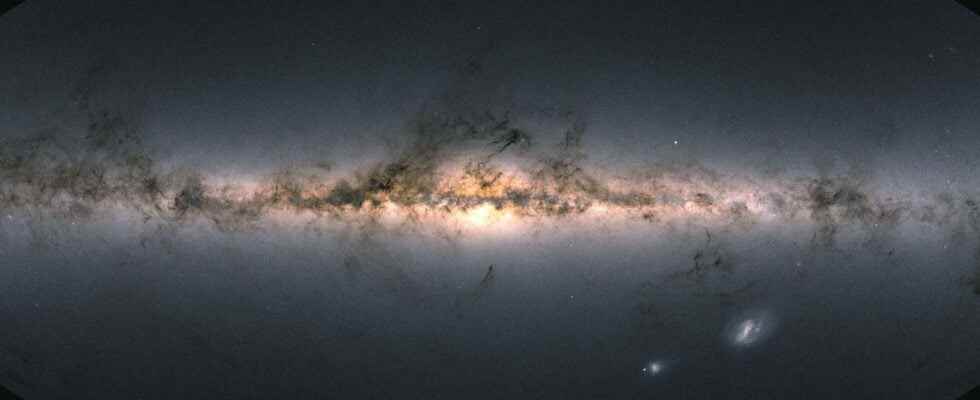Astronomers continue to analyze data collected by the Gaia astrometric mission concerning nearly two billion stars in the Milky Way. They revealed curious structures that could be the fossil remains of ancient spiral arms of our Galaxy.
The Gaia mission is a mission mainly of astrometry, that is to say, the purpose of which is to measure the positions and speeds from stars in the Milky Way as precisely as possible. Gaia set records because she made these determinations on over a billion stars in our Galaxy. These measurements impact all of astronomy and even cosmology because these data are used to estimate distances and luminosity stars, which makes it possible, for example, to better calibrate the standard candles what are the Cepheids, these stars which are crucial to calibrate the famous Hubble-Lemaître law on which rests all cosmology.
Gaia, it is also a way to better understand the structure of the Milky Way with its spiral arms, the deformations of its galactic plane or the presence of star currents betraying the effects of tide snatching stars from dwarf galaxies who would have gone too close to our big Spiral galaxy. In short, Gaia therefore allows you to do galactic archeology to dive into the strata of the history of our Milky Way.
In this edition of Space, we’re off to the stars: Astronomers using the European Gaia Space Telescope have compiled a catalog of one billion Milky Way stars, paving the way for new decades of discovery. © European Space Agency, ESA
The distributions of stars in fact keep in memory past interactions between them and other concentrations of stars and no doubt that the collision which is expected in a few billion years with the Andromeda galaxy will also leave some. We suspect, moreover, for this reason that it has already more or less occurred in the past.
Today, an international team ofastronomers, led by researcher Chervin Laporte, from the Institute of Cosmos Sciences at the University of Barcelona (ICCUB-IEEC), used data from the Gaia space mission to create a new map of the Milky Way’s outer disk and she came across a surprise as she explains in an article published in the famous newspaper Monthly Notices of the Royal Astronomical Society and which can be found in free access on arXiv.
Gravitational disturbances in a fluid of stars
Astronomers have discovered the existence in the Milky Way of many previously unknown spinning filamentous structures at the edge of its disc. It turns out that numerical simulations predict the formation of such filamentary structures in the outer disk from interactions with past satellites close to our Galaxy in the past. But the quantity of substructures revealed by this map drawn up from the measurements available since December 2020 did not result from any of the previous simulations.
Astronomers have made two hypotheses to explain these structures. In all cases, these are the effects of gravitational disturbances and tidal forces exerted in the past between our Milky Way and dwarf galaxies.
It has thus been argued that these structures are the equivalent of the crests of the rings of a wave propagating in a pond in which a pebble would have been thrown. The stars in the gravitational potential of the Galaxy indeed behave like a self-gravitating fluid and just like in the case of a fluid, waves can be formed there according to several modes of excitation. It is also believed that the spiral arms of galaxies are such so-called density waves in this fluid. On all these questions and others, it will be useful to consultcourses at the College de France of Francoise Combes.
The other hypothesis proposed clearly suggests that they are the remains of spiral arms. fossils of the Milky Way, arms generated by the forces of gravity there too of dwarf galaxies passed too close to its disk. Nowadays, the dwarf galaxy of Sagittarius which contains a few tens of millions of stars, is currently being cannibalized by our Milky Way and it is therefore precisely disturbing our Galaxy. We speculate on its possible near collision with the Milky Way 300 to 900 million years ago.
How to decide between these two hypotheses? Maybe using the William Herschel telescope on the Canary Islands in order to study in more detail the properties of stellar populations in each substructure. An observation program with secure time for this instrument has been accepted and will be carried out in the near future.
Interested in what you just read?
.
fs3
